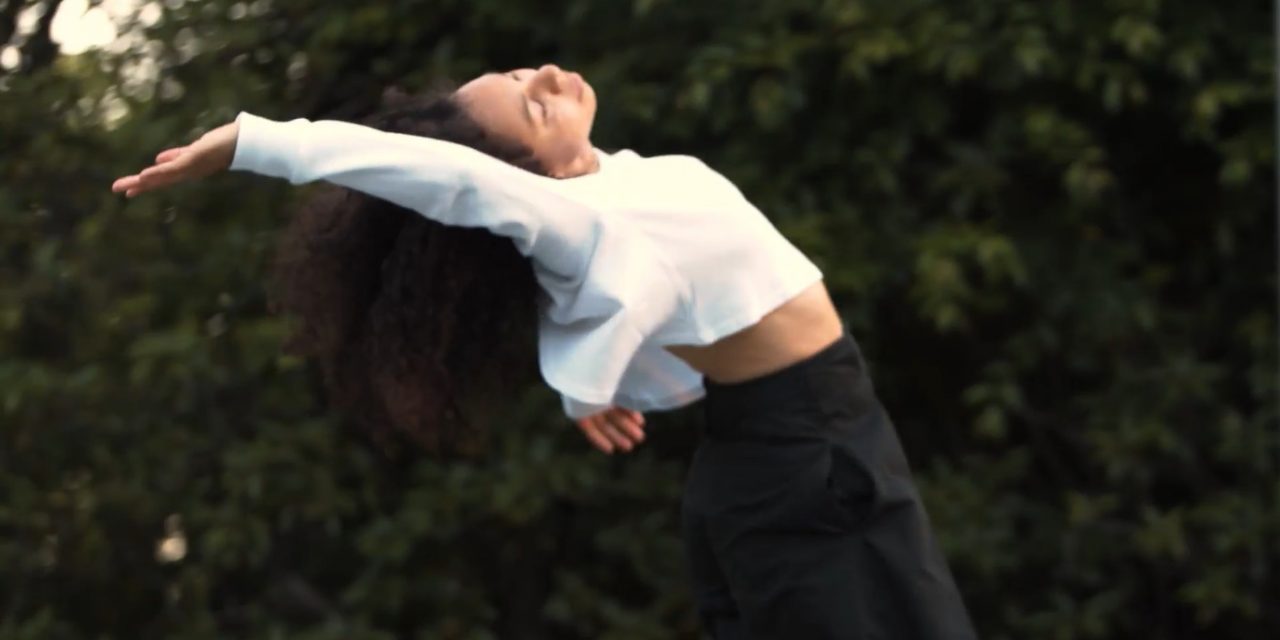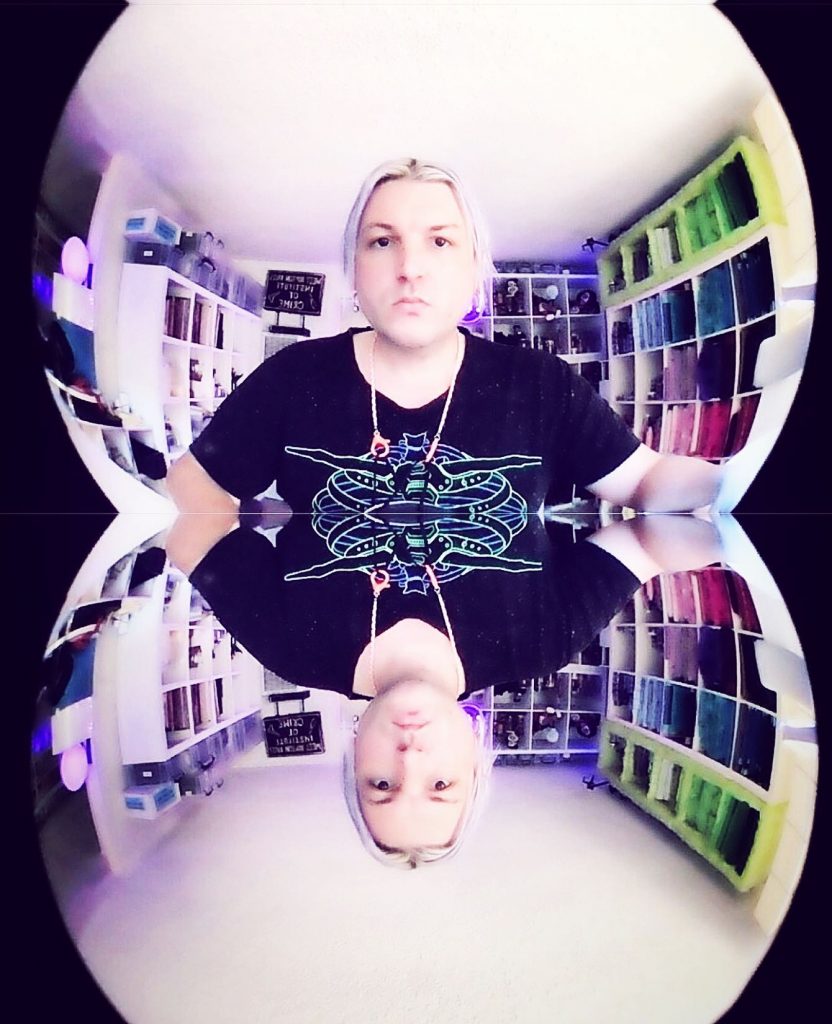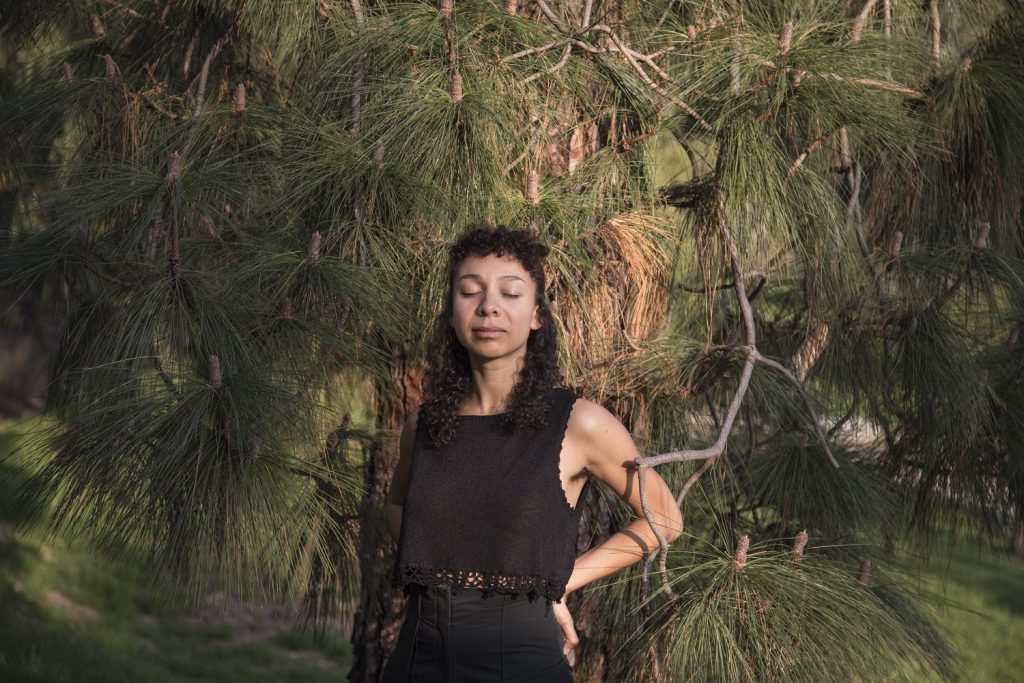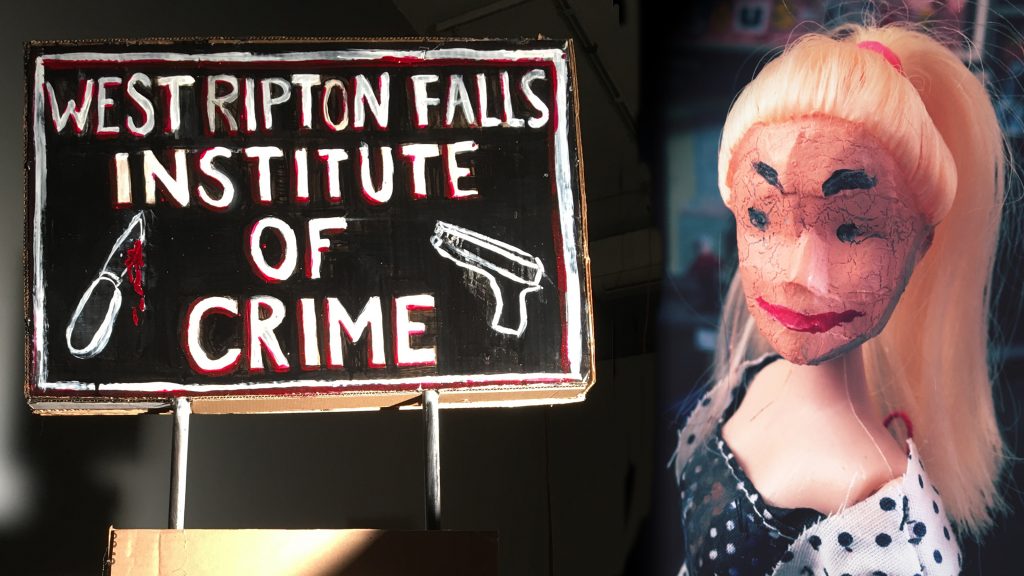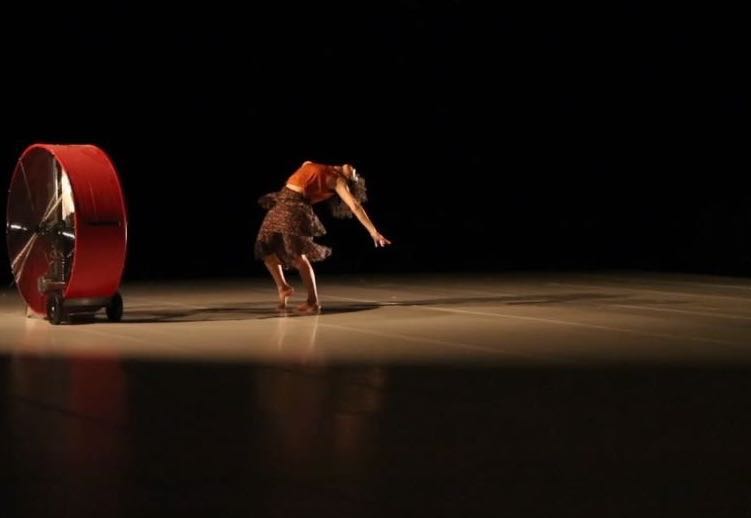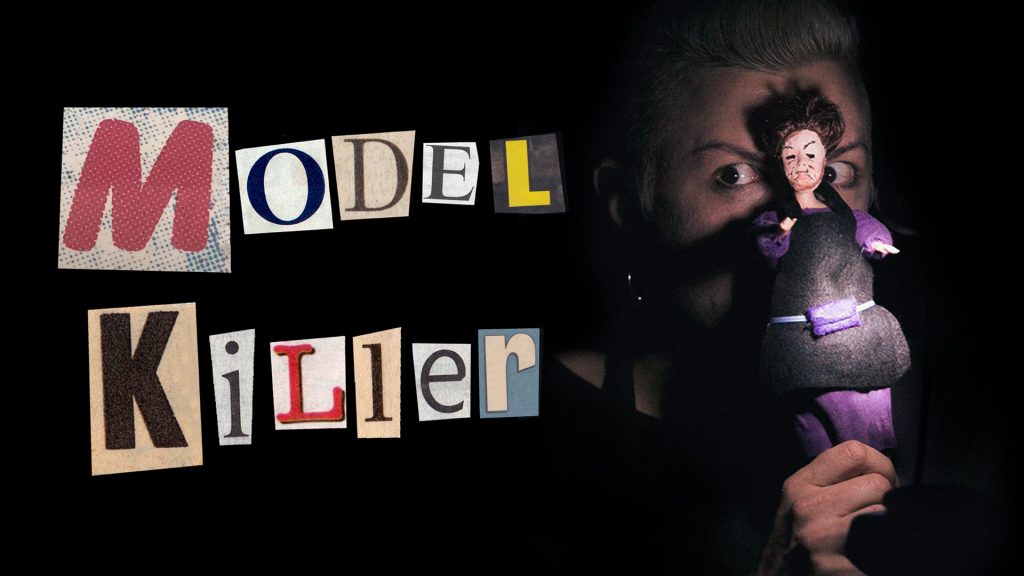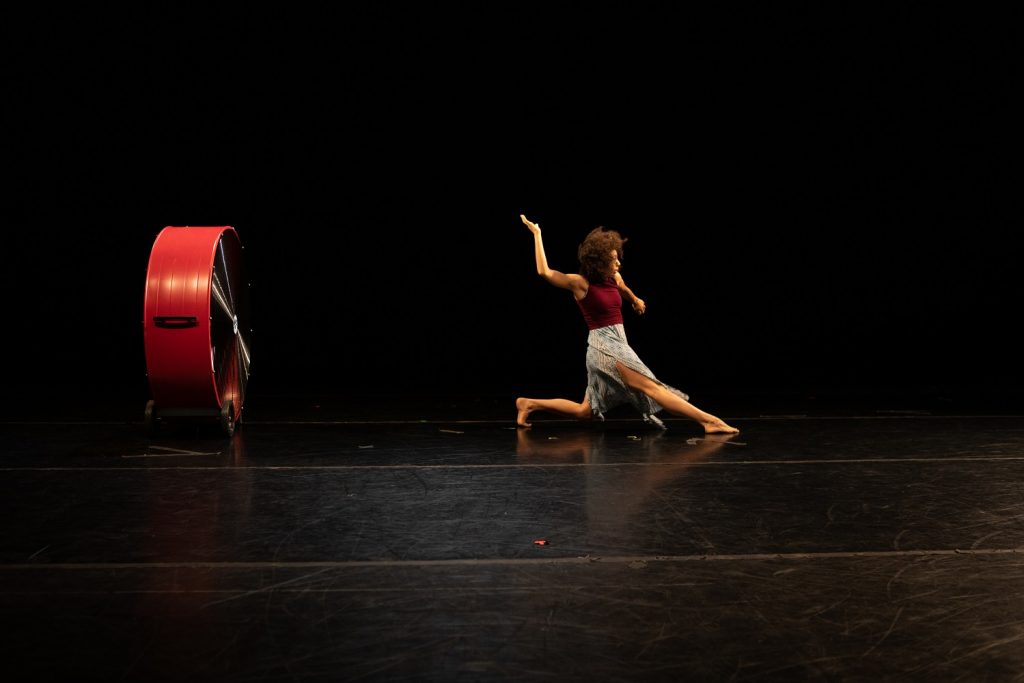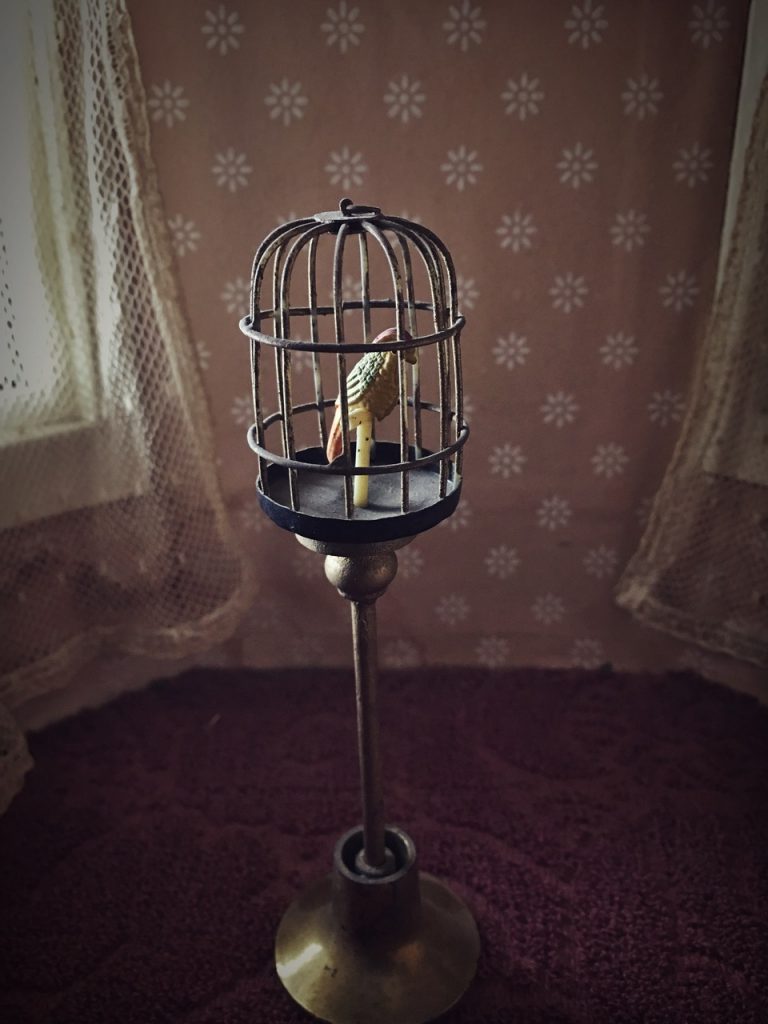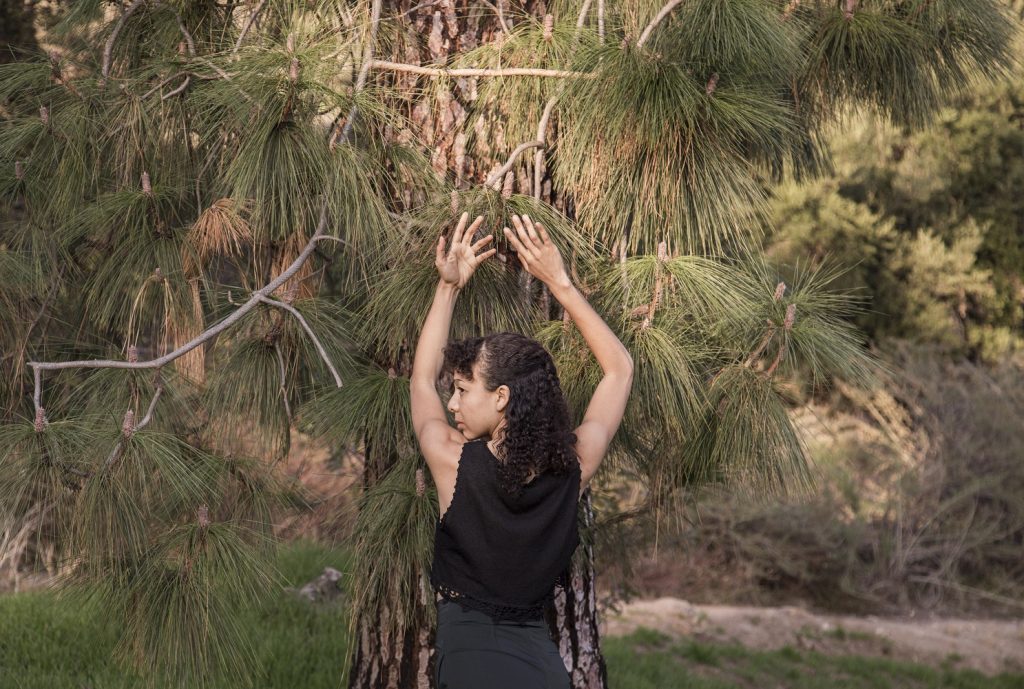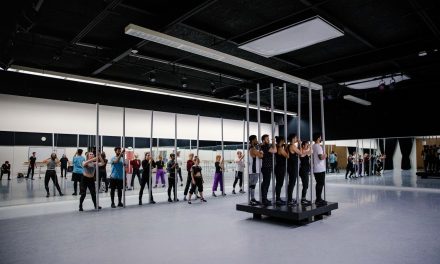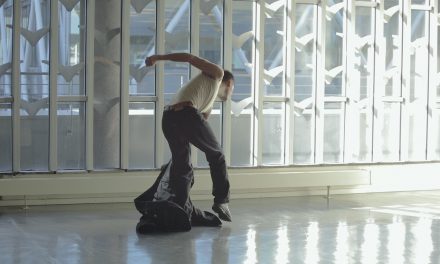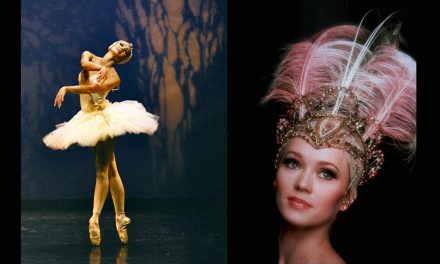Los Angeles Performance Practice (LAPP) is a network of independent artists and companies founded by Executive Director and Theater Producer Miranda Wright in 2010. It is a non-profit organization “devoted to the production and presentation of contemporary performance by artists whose work advances and challenges multi-disciplinary artistic practices”. It was via LAPP that Wright produced and curated the performance festival known as Live Arts Exchange (LAX) with over 100 local artists. She has also collaborated internationally producing work in Havana, Kigali, Kampala, and Prague.
Earlier this year LAPP announced that following a highly competitive proposal process, four artists were selected to receive $1,600 in cash support for early research and development toward a new project. In addition, artists were eligible for other resources such as rehearsal space, collaborator stipends, equipment, and producing consultations. Residencies are self-directed and each artist is allowed to choose the venue in which to work.
There were 50 proposals this year for the Research + Development Residency Program. The panelist charged with reviewing the proposals included former residency artists DaEun Jung ad Sara Lyons, the outgoing producer Brian Sea, producing intern Selina Ho, and Wright. Of those 50, five artists were selected as recipients to this support, with two who are working together. Their names are Marsian De Lellis; Lindsey Lollie; Xiaoyue Zhang; and Chelsea Zeffiro and Summer Dunsmore.
I was interested to learn what inspired these artists to apply for the Research + Development Program grant, what the application process was like, and what resources they received. I wanted to know the genesis of this particular project and if they were working with other artists or multi-media. When completed, I asked if there were future plans for the work, i.e. performances, touring, etc.
Of the five, Lindsey Lollie and Marsian De Lellis were able to respond with answers.
About the artists
Marsian De Lellis is a Los Angeles-based interdisciplinary artist who “investigates contemporary forms of animism, desire, and neurodivergence. In their work, they employ artificial figures, cutouts, pop-ups, performing objects, and wearable architecture.” They work with dolls and puppets, considering these as powerful objects rather than as simple toys. De Lellis sees them as “primal and disarming” representations of human beings. A few of their works include Model Killer: Giant Crimes + Tiny Cover-Ups, Object of Her Affection, (In)/Animate Objects, and Raggedy Ann to Real Doll with solo exhibitions in Chicago; Providence, RI; and Los Angeles; as well as group exhibitions in Los Angeles; Brooklyn, Ny; Seattle, WA; and Berlin, Germany; among other cities.
Lindsey Lollie is a Mexican/African American dancer, teacher, and choreographer who I first saw perform with szalt dance company, but who has continued to make her own mark as a choreographer; her work being presented at festivals and art happenings in Los Angeles such as LA Dance Festival, Celebrate Dance, REDCAT Studio, The Lightning Series, Hi Solo, Home LA, CalArts Commuter Fest, and Face the Music Dance Festival. Lollie has also performed for Liz Hoefner, Sarah Elgart, Rebecca Bruno, Jay Carlon, Nguyen Nguyen and Mollie Wolf.
LADC: What about this program inspired you to apply?
Lindsey Lollie: I was inspired by this program because of the flexibility and freedom that would come in a self led Residency. I was able to create my own parameters in terms of using public spaces, creating my own hours and researching anytime I felt called to in my day to day life. In a way the unknowns of the pandemic allowed space for the Residency program to take shape however it needed to and for me that was moving outdoors in the park and in the mountains. I needed support to take a risk outside of the studio, letting the research take me somewhere new.
Marsian De Lellis: I have had a long relationship with Los Angeles Performance Practice over the last decade as it had been producing work at Automata, a Los Angeles based performance gallery dedicated to experimental puppet theater and contemporary arts practices that I frequently created new work at. In 2018, as part of the 6th edition of the LAX Festival, I premiered Object of Her Affection, a solo object and puppet-based performance art piece centered on a woman, who in her search for true love develops intimate relationships with inanimate objects. Later in 2019, Los Angeles Performance Practice hosted a two week residency at Automata where I worked on the first couple of scenes with cardboard mock ups for my next project, Model Killer: Giant Crimes + Tiny Cover-Ups. Model Killer is a morbid comedy centered on a disgruntled dollhouse maker turned investigator. The protagonist, Vivian Nutt builds dioramas of unsolved murders, only for it to be revealed that she is in fact, a serial killer. I always found these collaborations with Los Angeles Performance Practice creatively valuable and a way for me to reach more of an audience.
LADC: What was the application process like for you?
Lindsey Lollie: The application process was accessible and reasonable in terms of the time commitment and expectations. Often, I find application processes are what discourage me from putting myself out there. It has been intimidating in the past, feeling like I have to prove myself as an artist, and having to create words for all the things I want to explore and all the things I really don’t know yet. This application process felt more full of possibilities but at the same time low stakes.
Marsian De Lellis: The application was at the (current) midpoint of the COVID-19 pandemic. There was a lot of uncertainty, entire days wasted on hold with unemployment over the course of weeks and months and trying to respond to emergency grant calls as fast as possible. With many of these opportunities, there was very little heads up and often funds would become exhausted within hours of an application going live. I was caught flat footed at the beginning of the pandemic, but by the fall, I had become a well-oiled proposal manufacturing machine. I submitted 54 applications that year, so I felt prepared by the time I heard about the R+D residency. I went to an online info session and applied the next day – which was lucky, because then my computer promptly died. Normally, I use performance documentation videos or photographs of my installations. But because Los Angeles Performance Practice was already aware of my work, I wanted to take a risk and show them something totally different.
Flashback: Earlier in the year I took part in one of the socially distanced solo residencies Automata was hosting. I knew there were pieces of two early 20th century dollhouses in the basement. I always wanted to look at them more, but every time I was at Automata I was frazzled running my own show or managing the house. I wanted to run my fingers along the crevices, fondle the wood siding, fixate on the wallpaper. But the dollhouses weren’t easily accessible. So I moved things around, gathered the pieces, and assembled the doll houses. One even had lighting. There were abandoned rooms with torn sun damaged curtains, miniature art in the bedrooms, a parrot cage, elaborate chandeliers. I wanted to know more about these doll houses. I heard they had been donated from the Bowers Museum, but there weren’t a lot of details, and I just wasn’t getting the origin story I wanted.
That changed – sort of. While I was snooping around the dollhouses, I dug out some unopened boxes. The boxes were filled with old books about dolls and dollhouses that an Automata board member had acquired. As it turns out the books once belonged to a gender bending bishop, named John Darcey Noble, who made erotic paper dolls and worked his way up to become Curator of Toys at the Museum of the City of New York. I may not have had an origin story for the dollhouses, but this was a pretty cool find – a historical figure who resonated with me personally and was “an important voice in the intellectual movement to interpret the artifacts of childhood as significant cultural symbols”, according to his New York Times obituary.
Back to the R+D application process. Since the nature of the residency was research based, I submitted some spreadsheets, one of which was related to John Darcy Noble’s collection of rare books that I had been cataloguing and documenting at home all year.
LADC: Other than funding, what does the program provide during the residency? ex: studio time, materials, etc.
Lindsey Lollie: The program provides a structured window of time in which I return to my own creative practice, coming out of a very long pause in 2020. I was able to find a beautiful outdoor amphitheater with free space and a generous Parks and Recreation administrator who encouraged me to use it. The Residency program provides support in terms of publicity and project meetings where I can discuss my visions for possible community outreach and performance.
Marsian De Lellis: I got to spend about a month in one of my favorite creative spaces: my one bedroom home studio and office. Because the world outside was worrisome and dangerous, I had been staying home. I had already moved every piece of furniture at least five times and reorganized my studio on more than one occasion. Everything right in front of me was in alignment.
But further inside, my brain was spinning. Since Model Killer was about a dollhouse maker turned serial killer, I needed to become an expert in both dollhouses and serial killers. I had already been compiling research (both visual and historical) on dollhouses sifting through the archives of John Darcy Noble. I wanted to become equally well versed in serial killers. I had already read some books and had been making a cursory spreadsheet of female identified killers. The residency really gave me uninterrupted time to dig into that research.
I was interested in the sensationalism of crime, how stories of killers are told in popular culture, and differences on how we view aggression through the lens of gender. There were clear contrasts in the ways female and male serial killers were covered in the media. The FBI even had separate classification systems. I searched online, found their names, read their stories, and organized data points including motives, monikers, life spans, geographic area, victim count and names, and additional links for further research.
I went way beyond Aileen Wuornos who many mistakenly believe was America’s first female serial killer. I looked for murderabilia (collectibles related to violent crime) and the unusual people who buy and sell them like pieces of fine art. I kept an eye out for cases of Munchausen Syndrome by Proxy (MSBP), in which attention seeking caregivers cause illness or injury to a person (often a child) in their care by manipulating the medical system. MSBP was becoming an ever popular storyline with cases like that of Gypsy Rose Blanchard of Mommy Dead and Dearest fame.
There were some plateaus – days where I kept running into unoriginal cases of black widow after black widow who poisoned their intimates with arsenic, or a husband killing syndicate here or there. But then I’d find gems, like Leondra Cianciulli, known as the “Soap-Maker of Correggio”. In 1939 her favorite son was set to fight with the Italian army in World War II and so like any loving mother, she came to the conclusion she needed human sacrifices to protect him. So she lured in spinsters, killed them, and made soap and cakes out of their bodies that she then fed to the neighbors. I found something oddly relatable to her unconventional logic. And at least she was creative and made her crimes into craft projects.
For the first quarter of 2021, I catalogued 2,275 female killers and just began scratching the surface at 6,514 male killers. And contrary to what Silence of the Lambs might have you believe, trans and nonbinary killers were few and far between.
LADC: If you are willing, what is the project you have in mind and what was the genesis for this idea? Only be as specific as you feel comfortable writing about or sharing.
Lindsey Lollie:
Wind Down is a dance research project where I use active observation and movement exploration to deepen my connection to the Wind and Hawks outside my doorstep. In the Research + Development Residency I am learning about how Wind moves, speaks and supports the birds in the sky around me. I entered this project as a dance artist but also as someone learning about my connection to the Wind and Hawk Spirits in nature. In my practice I have found that moving outdoors has expanded my concept of self expression and has helped me to process complex stories that cannot be rationalized. I believe that by taking time to witness nature always in communication alongside us, we can receive messages and transform our personal narrative, creating a new story. For this project, my vision is to create a relationship with these Spirits and to share parts of the journey through movement and storytelling.
The first image that drove me to start choreographing movement for “Wind Down” back in 2018 was from a memory as a young girl. It was the first time I remember experiencing something bigger than myself, a sense of knowing and not being afraid. The sound of the large fans in my house were the loudest part of the memory, moving the air while I danced around my room and my father rummaged through his music collection. Coming into this year, I heard of an ancestor of mine who had visions through the wind. This person was the Seer and would see things before they happened. People would experience these changes in nature and be able to prepare for them. But people were also afraid of it. My current research is inspired by this story and my desire to learn more while deepening my connection to Wind as an element, entity and guiding force in my environment. When I sit outside and watch the Hawks fly in the breeze, I can listen for messages, I can hear my ancestors.
Marsian De Lellis: Model Killer is a morbid comedy centered on a disgruntled dollhouse maker turned investigator. The protagonist, Vivian Nutt builds dioramas of unsolved murders, only for it to be revealed that she is in fact, a serial killer.
I wanted Model Killer to not just be a solo puppet performance, but also in the format of an installation where I guide small groups of ten to fifteen participants through an epic series of rooms filled with dollhouses, miniature sets, and dioramas. I will activate these familiar domestic zones to deactivate romantic notions of innocence and the happy endings pushed by fairy tales. In these intimate spaces, I will invite viewers to reconsider “female” serial killers, the historically feminine craft of miniatures, and the sensationalism of crime.
The narrative, which I am still writing, is centered on a small town where nothing is as it seems. Ripton Falls is a present-day dystopia marred by growing violence. During the unveiling gala for the Institute of Crime’s Murderabilia Wing, the chief curator discovers a mysterious package. A threatening letter incites a series of flashbacks that illustrate how Vivian, a middle-aged woman in plastic comfort footwear and a fanny pack, transforms herself from lonely crafter to one of the most notorious killers of our time
LADC: Will you be working alone or with other dancers/actors/musicians/artists/etc.?
Lindsey Lollie: I will be working both solo and with dance artists Stephanie Zaletel and Jordan Saenz as I begin my process. Having support and being able to witness other bodies in the space with me has been a joy and blessing after a year in isolation.
Marsian De Lellis: Since the residency, I have been working on an artist talk / docuseries reimagining Automata as a larger cultural institution and myself as a curator of the permanent collection. I have been conducting interviews, and telling the stories of the artworks housed there, including piecing together the life of John Darcy Noble based on his collection of books about dollhouses and toys..
Next I will be at Camera Obscura Lab in Santa Monica for the fall months developing puppets and set pieces for Model Killer. There will also be some educational opportunities for the community.
Stay tuned to the Santa Monica Department of Cultural affairs for the Camera Obscura offerings and Automata’s channels for the release of an artist talk on the permanent collection. I also be posting details on my website.
LADC: Has a showing or performance date been set and will all of you appear on the same program or separately.
Lindsey Lollie: I have not set a performance date of this work, but I am currently visioning what form this piece will take and who else might be involved. The work is still shapeshifting.
Marsian De Lellis: Next year when audiences are able to gather in more intimate spaces, I will be presenting a workshop of Model Killer at Automata with support from the Jim Henson Foundation.
LADC: If successful, will this piece go into your repertoire of works?
Lindsey Lollie: I am hoping that this development of “Wind Down” can be shared with the Los Angeles community and take the shape of a performance or dance happening.
Marsian De Lellis: I create installations and tactile spectacles that memorialize obsessional lives. Model Killer will be my most ambitious piece to date in a repertoire of work that celebrates the stories of unconventional people whose private manias become public fodder for tabloids and reality television:
For the installation, (In)/Animate Objects, a mountain of decaying rag dolls towered to the ceiling, upon which their maker, the grandmother, presides from the throne of her wingback chair. The thousands of decaying rag dolls testify to the need for love at the heart of the obsessional life. Object of Her Affection was a solo puppetry and object performance centered on a woman, who in her search for true love develops intimate relationships with inanimate objects. Raggedy Ann to Real Doll was an installation-performance in which one of America’s most beloved dolls must go under the knife to dissect what is just beneath the surface of our cultural preoccupation with physical perfection The Feeder was a short solo tabletop puppetry piece that explored the unintended consequences of a complicated relationship when the surviving partner of a gainer and feeder couple runs from the law after accidentally feeding his lover to death In Bride of Wildenstein, a solo cabaret style musical, an aging socialite grew fur and claws to recapture the attention of her philandering game hunter husband. In Growing Up Linda, an ensemble actor-puppetry performance, a woman who believes she’s the daughter of a famous ice cream mogul must come to terms with her troubled past.
I wish to thank Lindsey Lollie and Marsian De Lellis for taking time out of their busy schedules to respond to my queries. I look forward to viewing the results of their creative processes.
To learn more about Lindsey Lollie and lollieworks, click HERE.
To learn more about Marsian De Lellis, please visit their website. You can also follow them on Facebook, and on Instagram. To visit De Lellis’s Vimeo site, click HERE. To be added to their mailing list, click HERE.
To visit the Los Angeles Performance Practice website, click HERE.
Article was edited at 10:36 am at artists request.
Written by Jeff Slayton for LA Dance Project.
Featured image: Lindsey Lollie – Gliding – Photo by Tom Tsai

